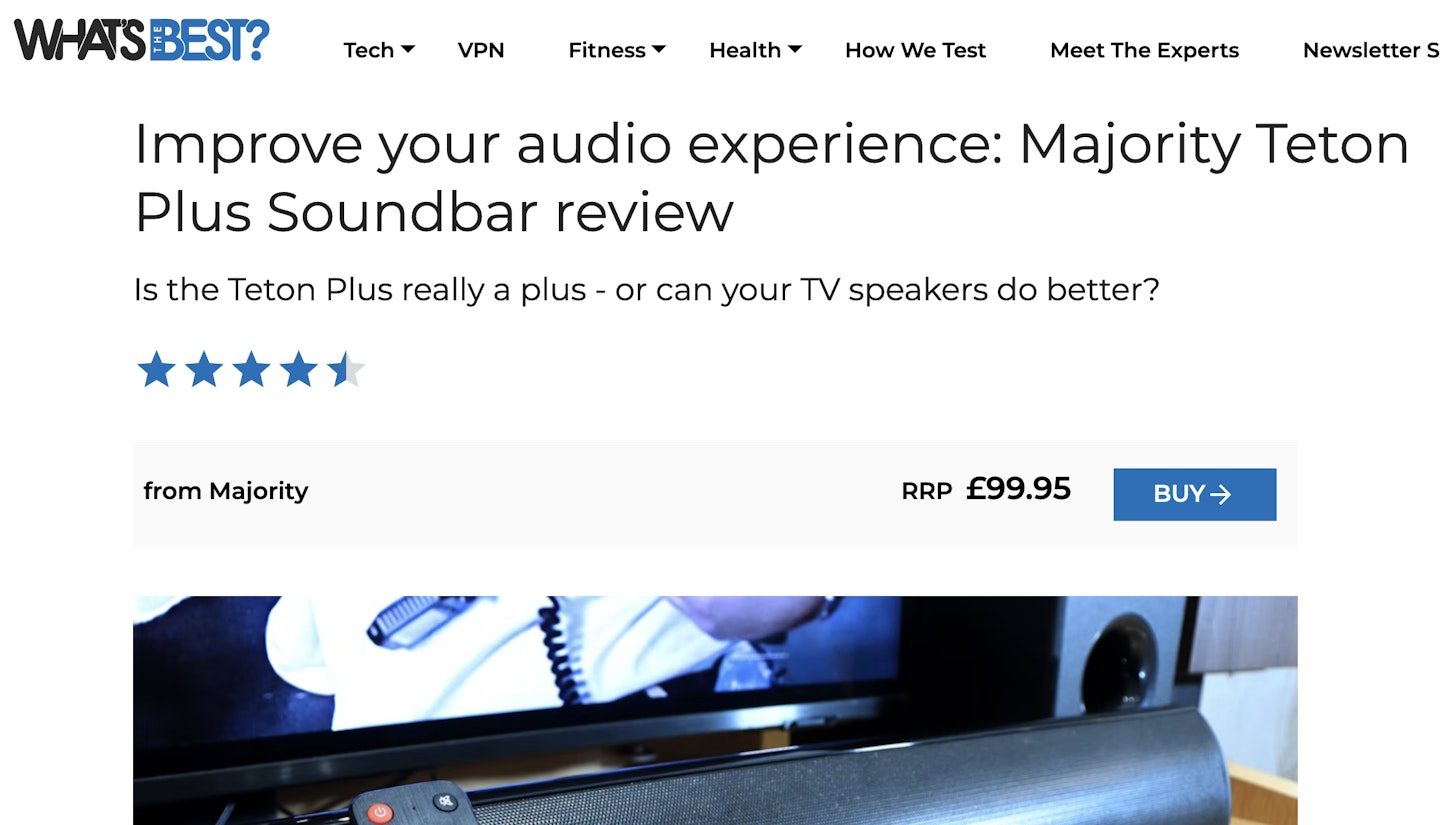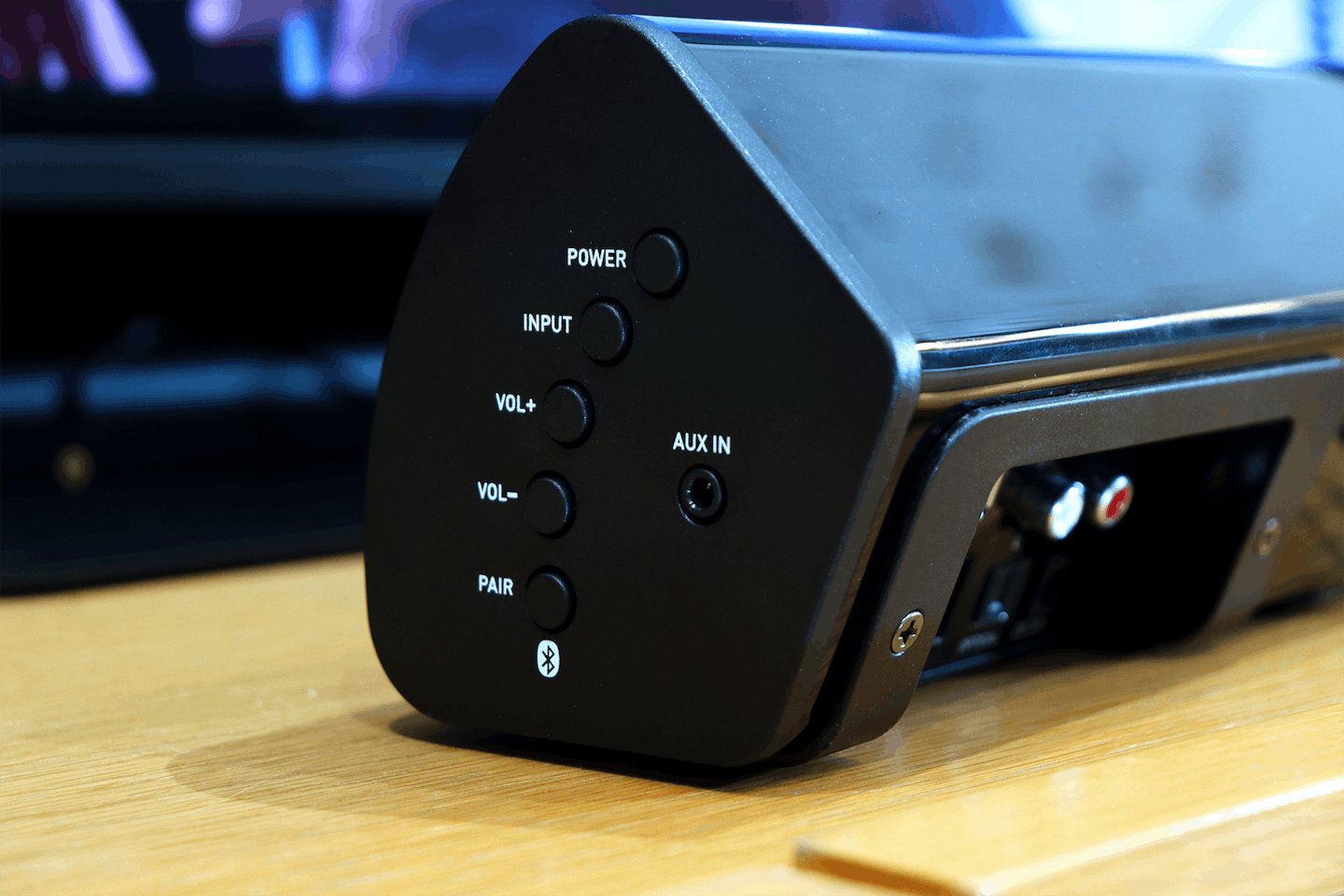At What’s The Best, our team of experts prides itself on delivering honest and thorough product reviews. On this page, we explain our testing process, scoring, how we get products in to review, and more.
Why should you trust us?
At What’s The Best, we dedicate our time to delivering accurate and reliable reviews and researching the best products available for a range of technologies. We consider anything less than complete honesty a disservice to our readers and our reputation as a trustworthy source of unbiased, accurate product information.
Our in-house writing team is made up of topic experts, each with a passion and deep lived experience with technology. Between us, we have decades of experience testing and writing about technology, bringing that knowledge to bear on all articles, advice pieces and reviews we create.
We do not accept payment for product reviews, and our writers completely control their articles, advice and recommendations. Products are chosen to best meet the needs of our readers. Though we may receive a commission or other compensation from the links on this website, we never allow this to influence product selections. These links allow us to keep doing what we love: creating meaningful and valuable consumer product advice. We never allow potential compensation to influence our reviews.
Though our experts have years of experience behind them, we’re also human and liable to make occasional mistakes. If you notice any inaccuracies in our reviews, feel free to contact us, and we can amend them when appropriate. You can find out how to reach us via our contact us page.
How do we test products?

When an expert tests a product, they adopt it into their lives and test it inside out. We don't rush our tests either – we give each product time to show us what it can (or can’t) do. It’s not unusual for tests of some items to last upwards of a month, especially for more expensive and complex items like smartphones and laptops.
What testing entails varies from item to item, but in most cases, we test them as though we have bought them ourselves. They become part of our everyday lives, and we use them as a normal consumer would. However, we always ensure we put time aside to engage with unique or specific features to test their validity and use. At the end of a review, our experts will provide details on how they tested an item.
Once testing is complete, the reviewer will write up their thoughts, take pictures to reinforce their arguments, and award the product a star score.
For an in-depth look at how we test, we have pages discussing practice and process in more detail:
Our star scores explained

When we review a product, we award it a score out of five stars. Here's a guide to what number of stars means:
1-2 - Terrible. All or most elements fail, and the product is best avoided. We’re surprised that it was even launched to the public. If something is this bad, we’ll give it to another team member to make sure that we all agree and that we aren’t missing something.
2.5 - Poor. Sub-par, some basic elements are weak or missing. We do not recommend such a product.
3 - Good. Does what it’s meant to, but nothing more and not all that exciting. The most average of average.
3.5 - Better. Standard elements are all here, plus a few noteworthy ambitious points. Average, but trying to be better.
4 - Great. Goes above the standard in a few useful ways, with better attention to detail. We’d happily spend our own money on these products.
4.5 - Excellent. It exceeds expectations at nearly every opportunity, just some very tiny grumbles that stop it from being flawless. A product at this level will deliver what 99 per cent of people want and need.
5 - Perfect. Remarkable and without fault, the only product of this type you’ll ever need. It’s worth every penny.
Below are snippets from two of our reviews, including a critical and a positive review, if you want to read some examples of our reviews.
This example is from our two-and-a-half-star review of the Denon AH-C830NCW Earbuds: “...for me, there are some glaring omissions that are frankly baffling at this price point. Firstly, there are no EQ presets and no companion app to allow for any tweaking. So if, like me, you'd prefer a bit more bass, you're stuck. Secondly, perhaps the most counter-intuitive choice I've seen for touch control earbuds is the complete lack of touch volume controls. So, although you can skip tracks, play and pause with a quick gesture, changing the volume using them is a no-go. Astounding, especially considering these Denons cost over £130.”
Here is an example of a conclusion from our five-star review of the Samsung Galaxy Buds2 Pro Earbuds: “The noise cancellation is the best I’ve tried in earbuds, even rivalling the powers of the Sony WH-1000XM5 headphones. The 360-degree audio is immersive for streaming entertainment, and the battery life will see you through the day without worry. It’ll be a good day too, because not only are they comfortable – even after hours of wear – but they are also stylish, so you’ll look the business too. These are just as solid and refined as any of the Apple headphones we've looked at. The connection speeds are flawless and touch controls are seamless. Expensive? Yes. Worth it? Definitely.”
What do we include in our reviews?

An expert's first-hand experience with a product informs the review. Our experts decide the areas of discussion, praise and criticism and then present them in an accessible, straightforward format. We avoid jargon, complicated graphs and over-the-top statistical analysis, choosing instead to give our readers the down-to-earth information they need to make an informed purchasing decision.
To best serve the reader and enable meaningful product discussion, the layout and structure of our reviews are flexible. However, there are several points that all reviews must address. These are:
Usability. How the product’s build and features interact.
Performance. How the product’s usability translates into day-to-day usage and user experience.
What’s new? If a product is a new model in an established line, we will compare and contrast it with the previous model.
Price and competition. How the product sits in the marketplace in relation to competition, and what the cost of the product represents in terms of value.
Other products to consider. Alternative products which meet the same or similar need, including more budget or premium options.
Who tests the products?
What’s The Best is home to a team of subject specialists and passionate advocates for their chosen fields. When we test a product, it’s passed to a team member with the relevant expertise.
We’re a diverse team with many diverging and intersecting interests. Some of us are into tech purely for the enjoyment it brings, while others see it as a means to indulge in other interests. For music enthusiasts, seeking the best audio equipment is essential, while film buffs strive to create the ultimate home cinema experience with top-tier TVs and soundbars.
A tech team wouldn't be complete without gaming fans, who spend their free time exploring digital worlds on handheld and home consoles and custom-built PCs. Some of us are also passionate about using tech to enhance our fitness, relying on fitness trackers and heart rate monitors to optimise our performance.
If you want to know more about the team at What's The Best and their specialist areas of interest, head over to our team bio page now.
How do we get products to test and review?
Our experts get their hands on items for testing in several ways. One way is that a brand or a PR company working on behalf of a brand sends us a sample item. Sometimes, What’s The Best purchases an item for testing, or an expert reviews a personal purchase. No matter how a product reaches our experts, we ensure that the final review is as honest as possible. Our final opinion derives from an expert's first-hand experience with a product. We praise when deserved and criticise when just.
